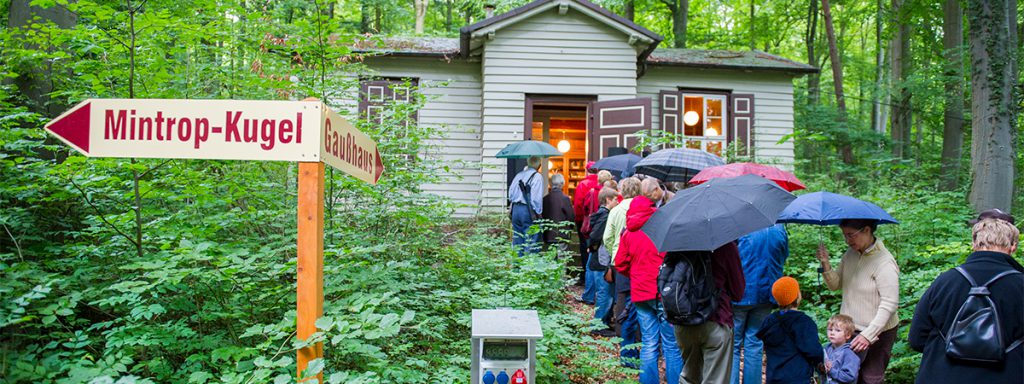
The Gaußhaus
Here Carl Friedrich Gauss researched geomagnetism.
Historical Earthquake Station | Gauss house and earth magnetism
Gauss-Weber telegraph
In 1833, Carl Friedrich Gauss and Wilhelm Eduard Weber invented the world’s first electromagnetic telegraph. Two years earlier, Michael Faraday had discovered electromagnetic induction, and Gauss was ingeniously linking his magnetic measurements to this effect. From the induction-powered signal transmitter led a roughly 1.2 km long wire double line from the observatory to the Physical Cabinet, the workplace of Weber. Later, the line was extended by 60 m to the Gaußhaus. The receiver used was a horizontally oscillating magnetic bar in a wire spool, the rashes of which were observed as a result of the power surges by means of a telescopic sight through a mirror rotating with the magnetic bar. In 1845, a lightning strike destroyed the Gottingen telegraph line.
A replica of the Gauss-Weber telegraph is in the Gaußhaus. This makes it possible to send and receive information using the binary code system developed by Gauss and Weber.
More information can be found here.


